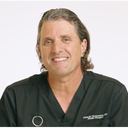Posted underFacelift q&a
Can you get a mid-facelift without making eyes look squished up against by cheeks?
I think mid-face lift results look great except for one thing which holds me back from proceeding... I find that big beautiful doe eyes often lose their character... can this be avoided while still getting the mid-face improvement? (esp, removing nasolabial folds) If nasolabial folds are primary concern... could one just have that addressed w out moving cheeks up into the eye hollow space? how to go about this concern when consulting and moving forward w mid face lift , if at all .. thanks
Answers (4)
From board-certified doctors and trusted medical professionals
More Facelift Questions
See all Facelift Q&AWE SEND PRETTY
EMAILS
What’s trending? Who’s turning heads? Which TikTok myths need busting? We’ve got you. No fluff, no gatekeeping—just real talk. Get our free, unfiltered newsletter.

